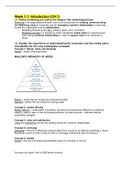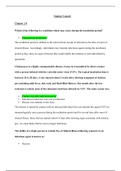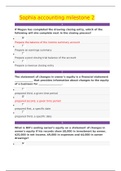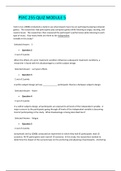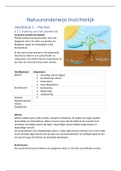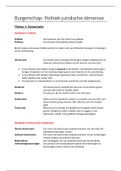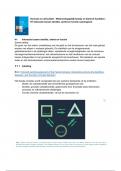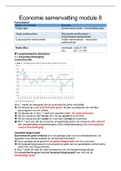Samenvatting
Summary of all the Marketing 1 lectures
- Instelling
- Vrije Universiteit Amsterdam (VU)
This is an comprehensive summary of all the lectures for the course Marketing 1 at the Vrije Universiteit for EBE students. Besides the lecture slides, I also included all my lecture notes
[Meer zien]
